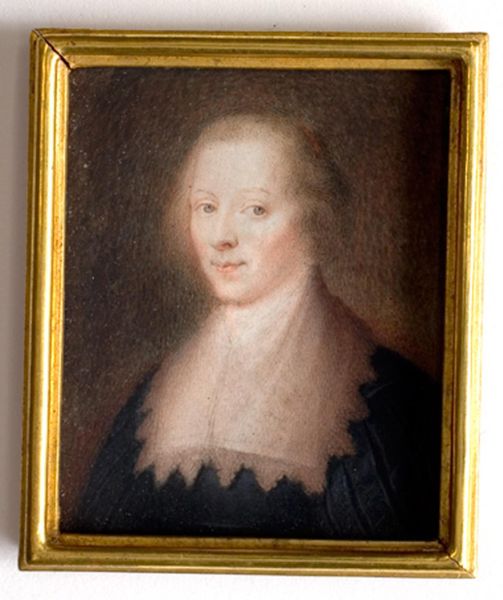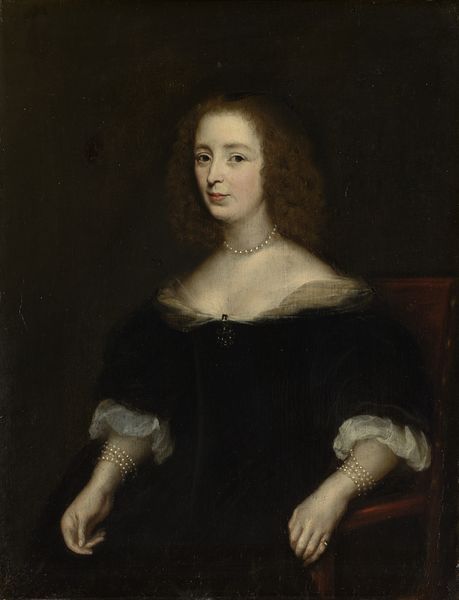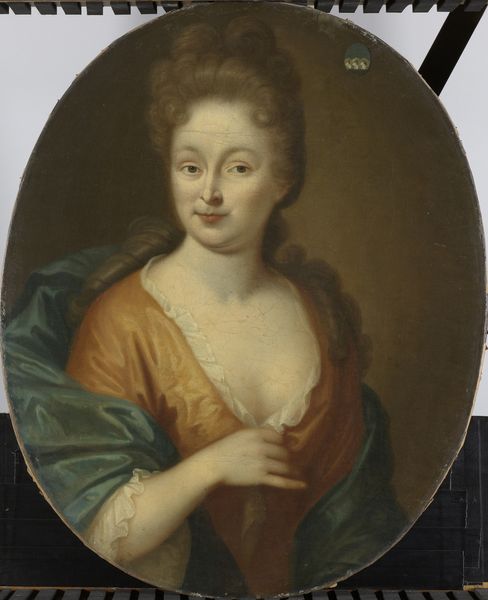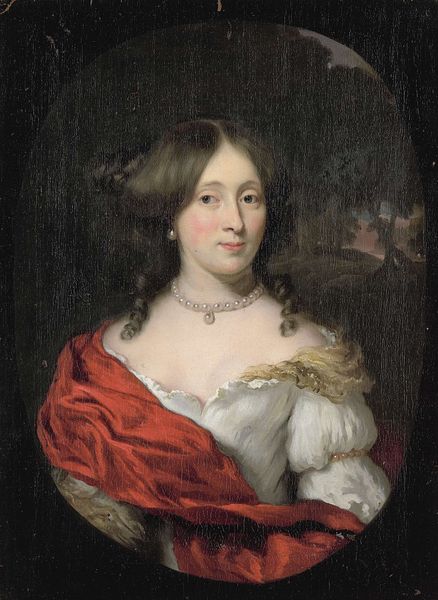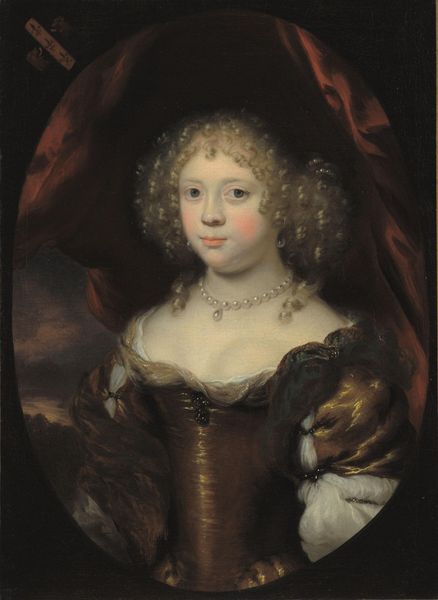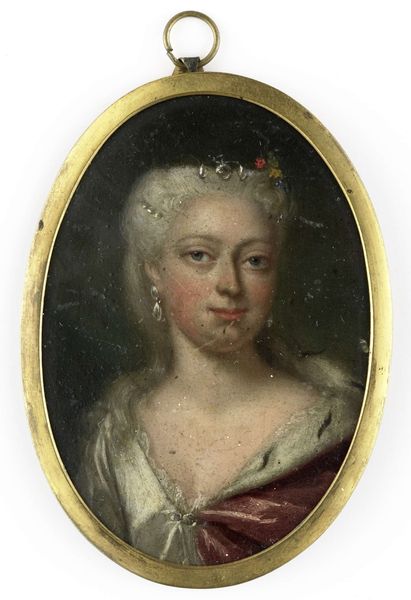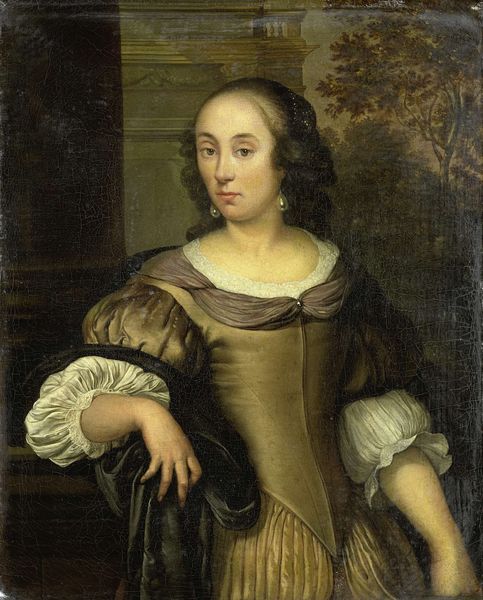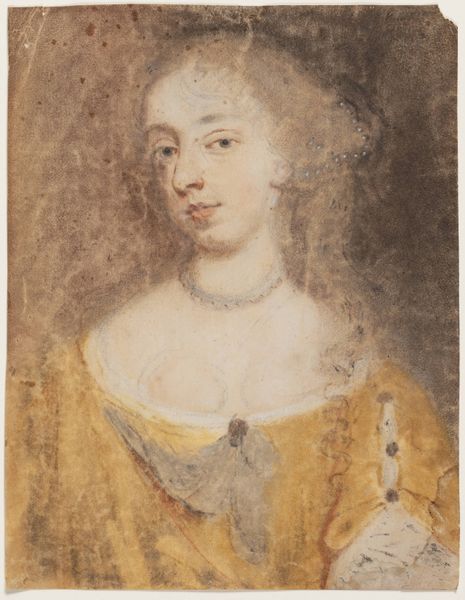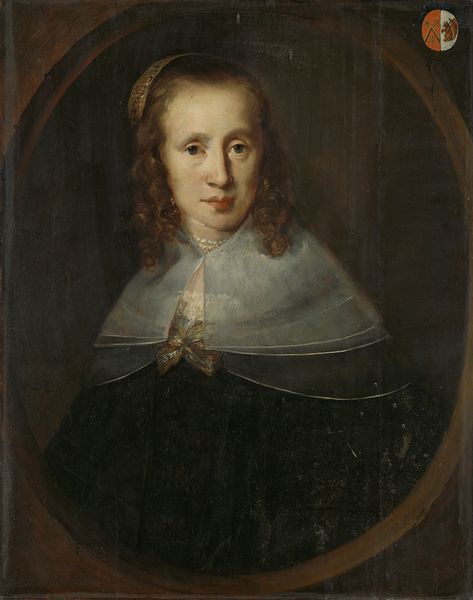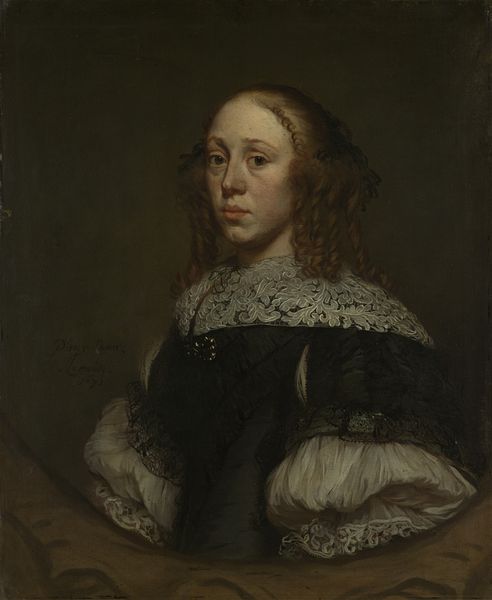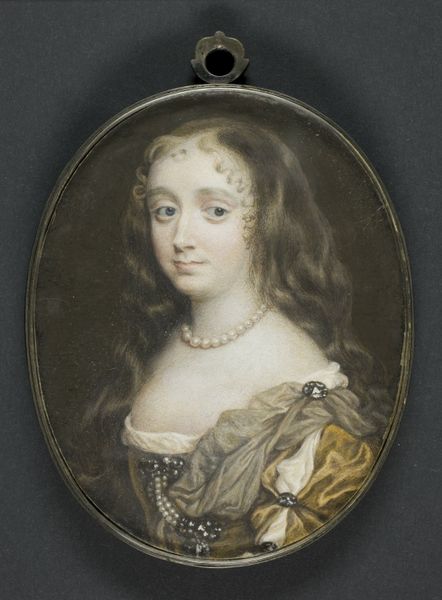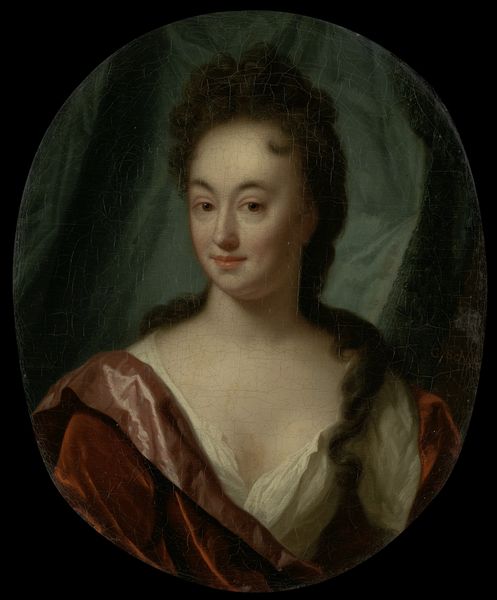
painting, oil-paint
#
portrait
#
baroque
#
painting
#
oil-paint
#
oil painting
#
genre-painting
#
history-painting
#
portrait art
Dimensions: 19 cm (height) x 14 cm (width) (Netto)
Editor: Here we have Juergen Ovens' portrait of Duchess Mary Elisabeth of Saxony, painted sometime between 1638 and 1678, using oil paint. I'm struck by the richness of the darks, and the subject's almost weary expression. What captures your attention in this piece? Curator: I’m drawn to the materiality itself. Look at the construction of the Duchess’s garments, presumably sewn by someone, possibly several hands to produce, which, by their nature, signify wealth, class. The lace trimming, the pearls-- these all point to networks of trade, labor, and consumption. Who produced these items? Under what conditions? Editor: That’s interesting. I hadn't considered the production aspects. So, rather than just seeing a portrait of a Duchess, you're seeing the unseen labor behind her presentation? Curator: Precisely! And consider the oil paint itself. Where did the pigments come from? What was the process of refining them, preparing them for Ovens’s brush? Each brushstroke is laden with economic and social meaning, and each element of production suggests broader manufacturing contexts across Europe. The layers beneath the image also have an economic reality – from the frame down to the underpainting, each reflects someone who was laboring to enable someone of power to flaunt. Editor: It really shifts the focus. Thinking about the materials and processes used makes you aware of what is happening away from the subject, and not on the subject of wealth, but where this wealth came from. I won't see portraits in the same way now. Curator: Exactly! By examining the 'how' and the 'what' something is made of, you can illuminate much larger and more complicated things at play.
Comments
No comments
Be the first to comment and join the conversation on the ultimate creative platform.
